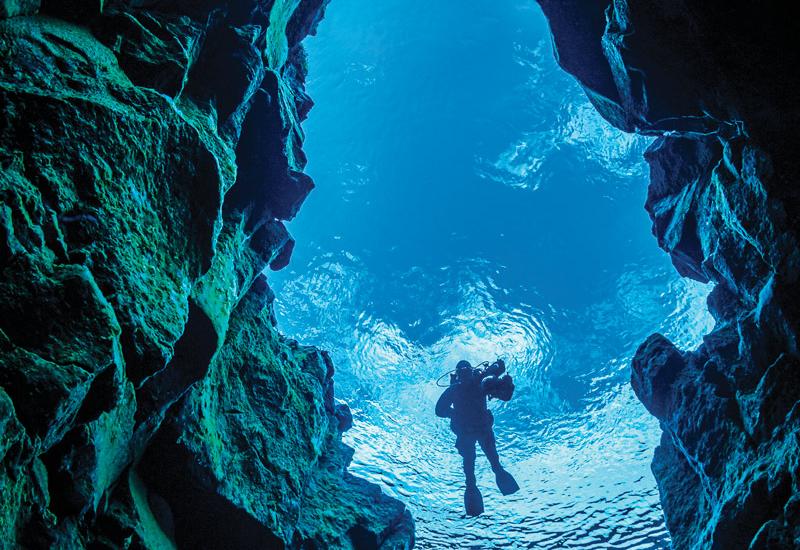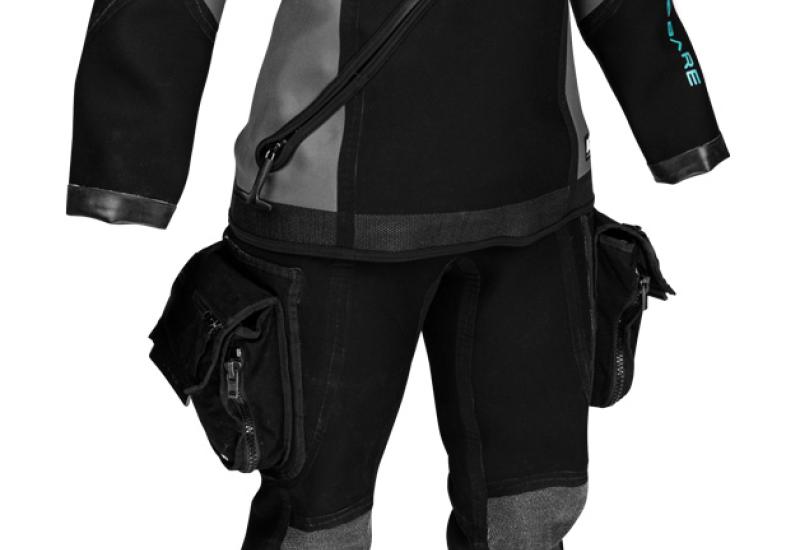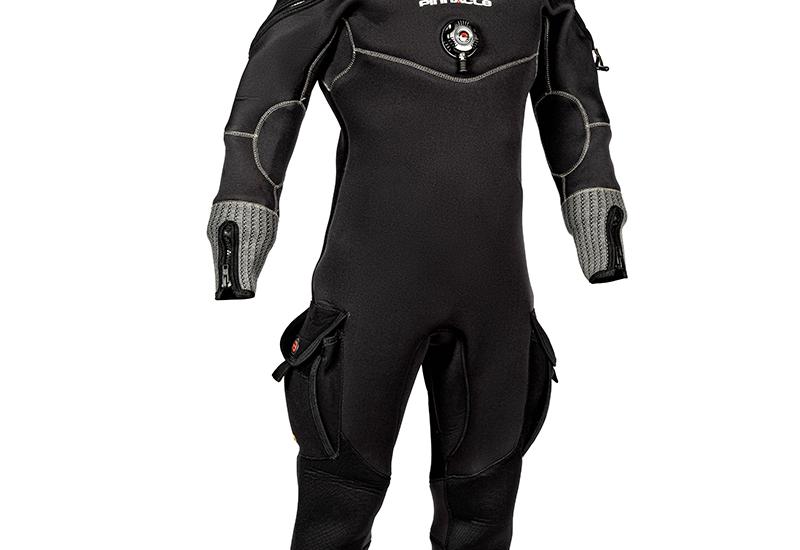How to Make the Most of Your Drysuit
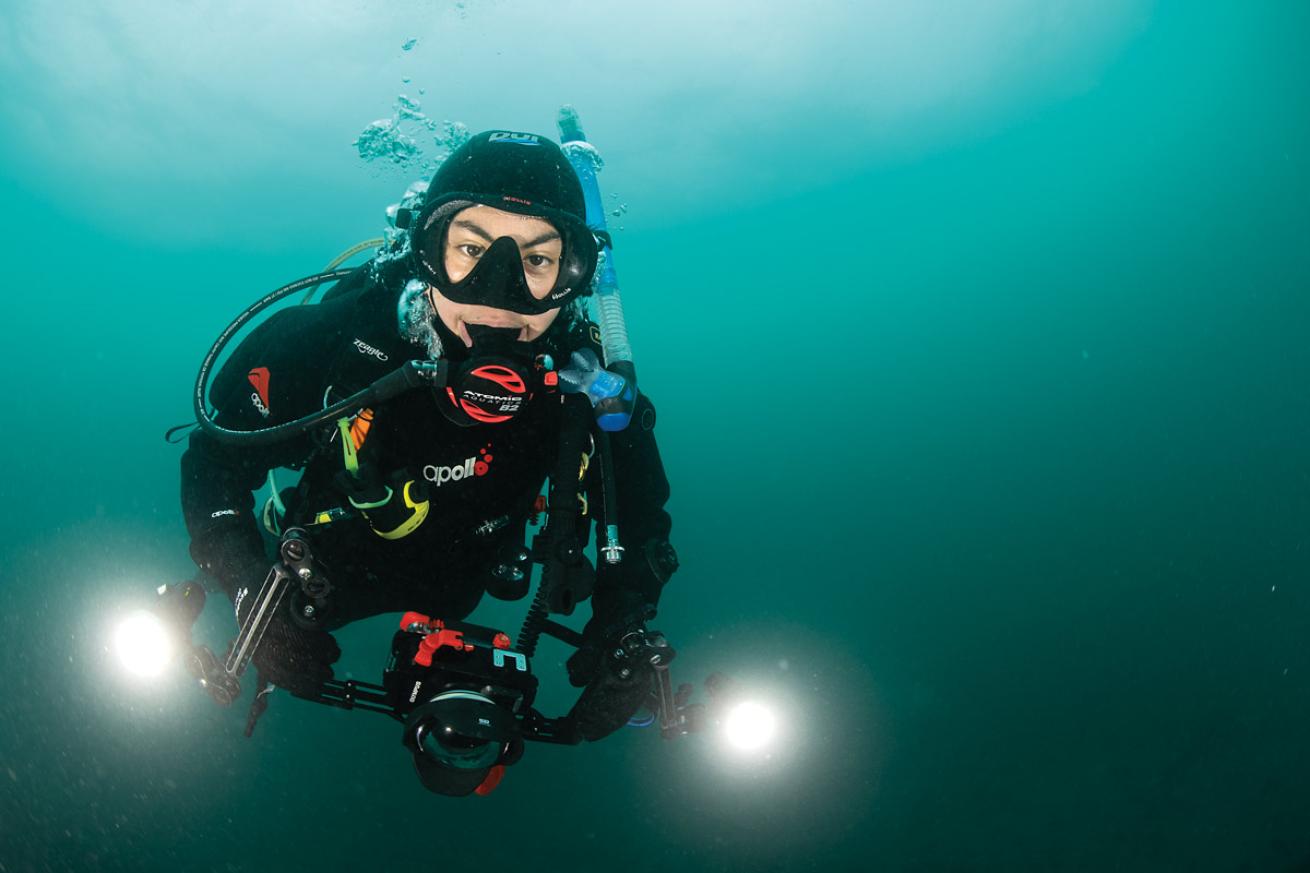
Annie CrawleyIf you live near cold-water diving, you can simultaneously complete open water or advanced certifications while learning drysuit diving.
As cold-water destinations are becoming more popular, the opportunities for drysuit diving worldwide are increasing. Drysuits are used for all kinds of diving, including but not limited to ice, deep, polar and cave. While not difficult, diving with a drysuit isn’t always intuitive, and specialty training is necessary. If you are considering taking the plunge into this specialized piece of equipment, here are some helpful tips.
It Starts With The Suit
Choosing a suit based on body shape, size, weight and proper fit is crucial for comfort, mobility and effective insulation. You may fit in stock suits or prefer to special-order a custom suit cut to your measurements. Consult a dive retailer to find what will work best for you.
Related Reading: How the BARE Guardian Tech Dry Drysuit Performed in My Intro to Cave Class
Get Comfortable
Whether you rent or purchase a drysuit, plan to hit the pool and practice whenever you change suits or undergarments. You’ll need different undergarments, hood and gloves depending on water temp. Practice donning and doffing your equipment until you become comfortable. Everything is harder with gloves and a hood on. Although uncommon, if your drysuit valve sticks, you need to be able to disconnect it to prevent an uncontrolled ascent.
Drysuit divers use a variety of undergarment layering systems for different temperatures. Depending on your suit and layering system, you may need more weight and therefore might need to change out your BCD depending on the lift capacity, or swap your integrated weight system to a harness weight system. Check that the strap of your wrist-mounted computer or compass fits with your drysuit. You may need a longer strap, bungee or retractor.
Finning Matters
Although some fins can be used for both warm and cold-water diving, many, such as full-foot fins, cannot. You may need to size up from the fins you use with a wetsuit. Check the fit over your drysuit boots. You want fins that easily propel you through the water with the extra weight needed for drysuit diving. If they are too tight or stiff, they can cause cramping. Review hand signals for cramp release, and practice self-cramp release on the surface before descending.
When you descend to deep water, practice finning and neutral buoyancy skills while experimenting with trim. If your legs are dragging, you either have too much weight or you need to engage your lower back and lift your butt toward your tank. This forces your legs up, so you are more streamlined in the water. Try bending your knees 90 degrees and practice the modified frog kick while lifting your lower back to avoid stirring up the bottom.
Related Reading: What It’s Like to Warm Water Dive For the First Time as a Cold Water Diver
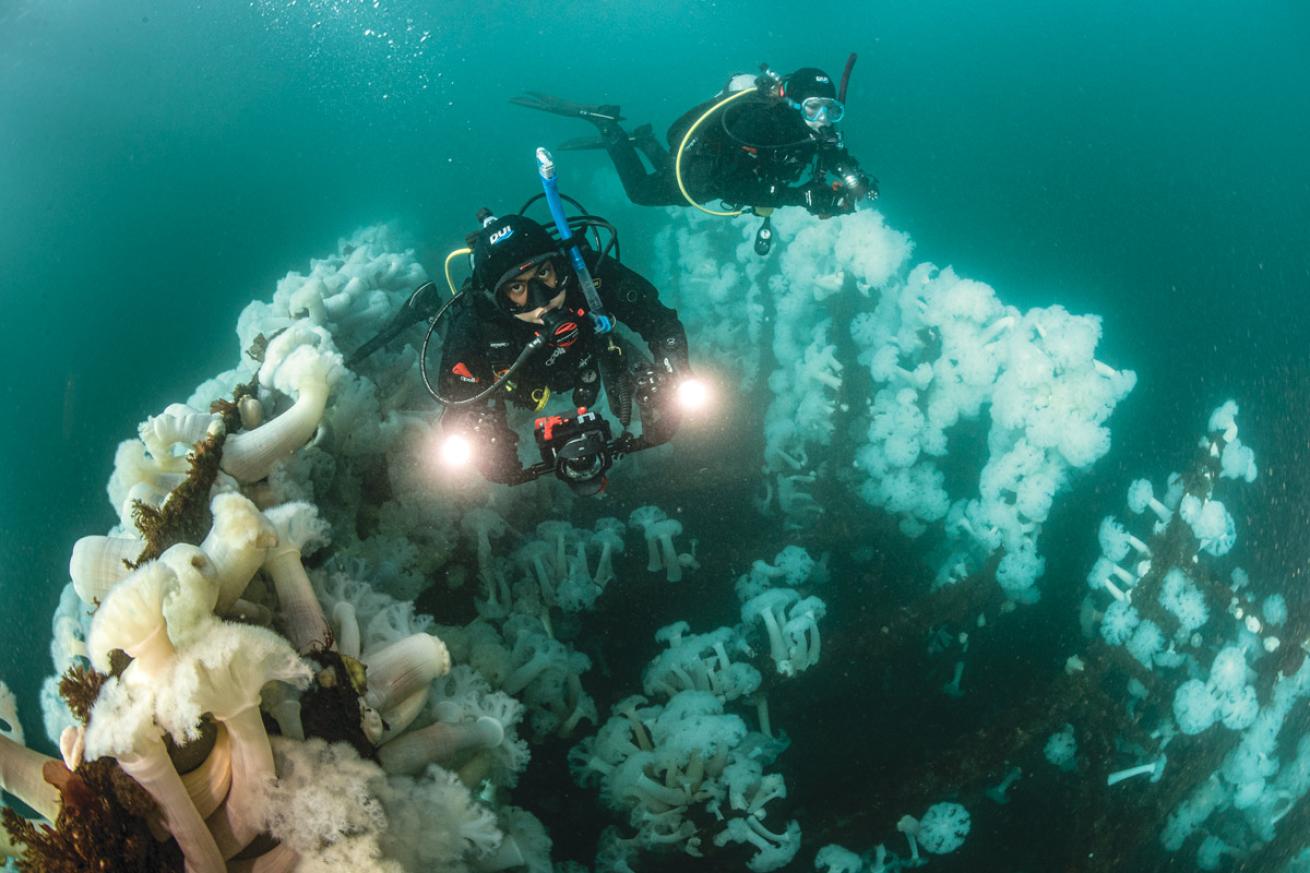
Annie CrawleyIf you plan to use a camera with your drysuit, make sure you’ve already mastered dumping air before adding another element. If you lean too far forward and down, air will go to your feet.
Prevent Turtling
Together with your buddy, swim side by side in a parallel position. It’s more challenging when one diver leads as the diver in front must turn around to check their buddy. Having your head on a swivel in cold water is hard. When a diver must look behind them with a steel tank and extra weight, they are more likely to flip tankside down, with their limbs up (like a turtle on its back). You can practice getting out of this position by using your arm and core muscles to flip the tank 180 degrees so it rests on the middle of your back. Practicing will help you stay in control when you find yourself in this position.
Switch Positions
To move from a horizontal position to a vertical position and vice versa without changing depth, lower your legs without kicking your fins so your feet are down and shoulders up. This allows you to move air from your feet to your shoulder dump valve as needed. The air in your drysuit will not expand because you’ve maintained your depth, and you can now dump air without ascending. As you practice, explore your breath and exhale while lowering your legs to further master this skill.
Practice at the surface. Get vertical, then pull and push water over your fins. This will move your body up or down like a seesaw. Refrain from using your hands as you find the power in the flow of water over your fins. When descending in deep water, once you reach 12 feet, move from your vertical descent (feet down/head up) position to a neutrally buoyant horizontal position controlling your buoyancy as you slowly descend with your tank on your back. Anytime you release air from your drysuit, check to make sure you are neutrally buoyant. Adding air through the intake valve in small bursts is more controlled than deflating through the exhaust valve. If you have not been diving in the past six months, do a refresher with a dive professional.
PRO TIP
Once you learn how to dive in a drysuit , you need experience for the variety of conditions and water temperatures you plan on exploring. Always consider location-based continuing education when traveling if different from where you learned. This gives you water time with a dive professional/mentor/facility in new locations.


